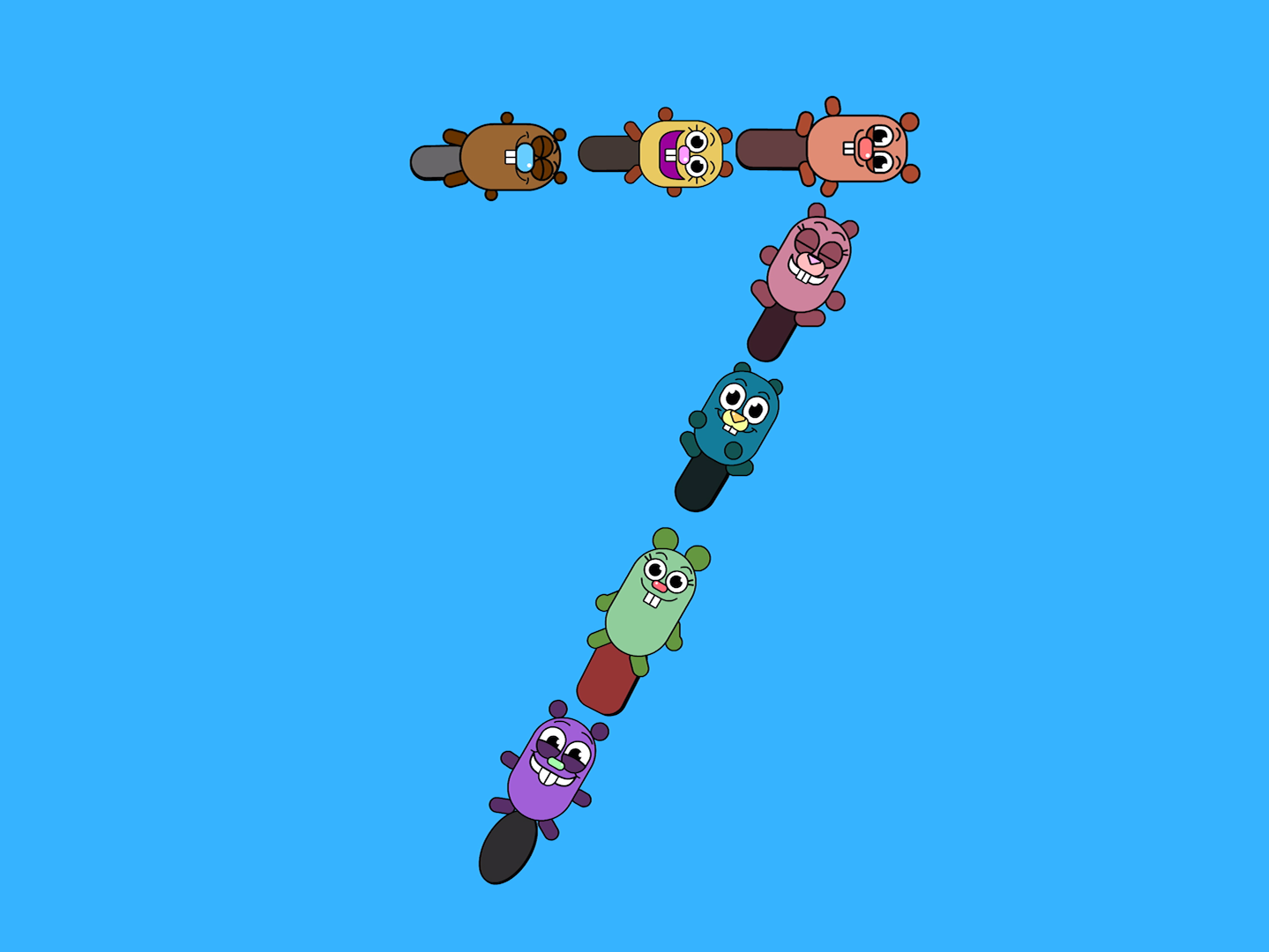I had been approached by Neal Cohen of Aperture Communications on referral from a recent employer and mutual collaborator, Francis Anderson. BPC (Bipartisan Policy Center) was seeking an animated presentation on the topic of Net Zero, a popular topic as well as a movement amongst environmentalist circles
The goal: negate the amount of greenhouse gases produced by human activity by reducing emissions and implementing methods of absorbing carbon dioxide from the atmosphere.
BPC had partnered with Decarb America, a research initiative dedicated to achieving Net Zero in the United States by the year 2050, to broadcast the Net Zero mission.
The goal: negate the amount of greenhouse gases produced by human activity by reducing emissions and implementing methods of absorbing carbon dioxide from the atmosphere.
BPC had partnered with Decarb America, a research initiative dedicated to achieving Net Zero in the United States by the year 2050, to broadcast the Net Zero mission.
This project presented several challenges, chief amongst them was creating a presentation on a highly technical and delicate subject. We worked closely with the folks at BPC to ensure that we were meeting their vision while handling the material appropriately.
After an introduction to BPC and the Net Zero project, courtesy of Neal, I began by formulating a series of preliminary animation concepts demonstrating different ways we might approach the concept. These were devised from a mix of new assets, as well as ones that I had on file from previous projects.
Each of these represented a different budget and timeline. Option 1 would be the quickest and cheapest to produce, while 3 would take the longest, and be the most expensive.
It was up to BPC to decide how ambitious they wanted us to be with the concept.
Ultimately we settled on a hybrid between options 1 and 2, for the sake of aesthetic choice as well as budget.
It was up to BPC to decide how ambitious they wanted us to be with the concept.
Ultimately we settled on a hybrid between options 1 and 2, for the sake of aesthetic choice as well as budget.
From here, I put together a production schedule and budget breakdown. Once this was approved, I reached out to several artists in my network, putting together a small team based on their respective artistic strengths, as well as my own.
It began with a script, which I co-wrote with Neal, and Nickelodeon alumni Nick Dossman.
Nick and I breathed new life into the project by fleshing out the transit concept seen in option 2 and introducing a transformation theme.
Nick and I breathed new life into the project by fleshing out the transit concept seen in option 2 and introducing a transformation theme.
Our Net Zero presentation hinged on three main points; 1) technological innovation, 2) influencing behaviors in consumerism, and 3) legal constraints in permitting processes.
The writing process inspired us to contextualize these points as trains, whose wake would transform the US landscape as they passed.
The writing process inspired us to contextualize these points as trains, whose wake would transform the US landscape as they passed.
From the outset we found ourselves straddled between the client’s technical expertise and my team’s creative sensibilities. Neal was adamant that the deliverable be as relatable as it was informative; not so technical as to turn off a layperson. At the same time, BPC stressed accurate information. It was also important that we convey a reliance on current technology while making a smooth transition toward clean, environmental resources. We went through a number of drafts before settling on an approved script; one that outlined the concept clearly and correctly without coming across as biased or negative in our portrayal of the situation.
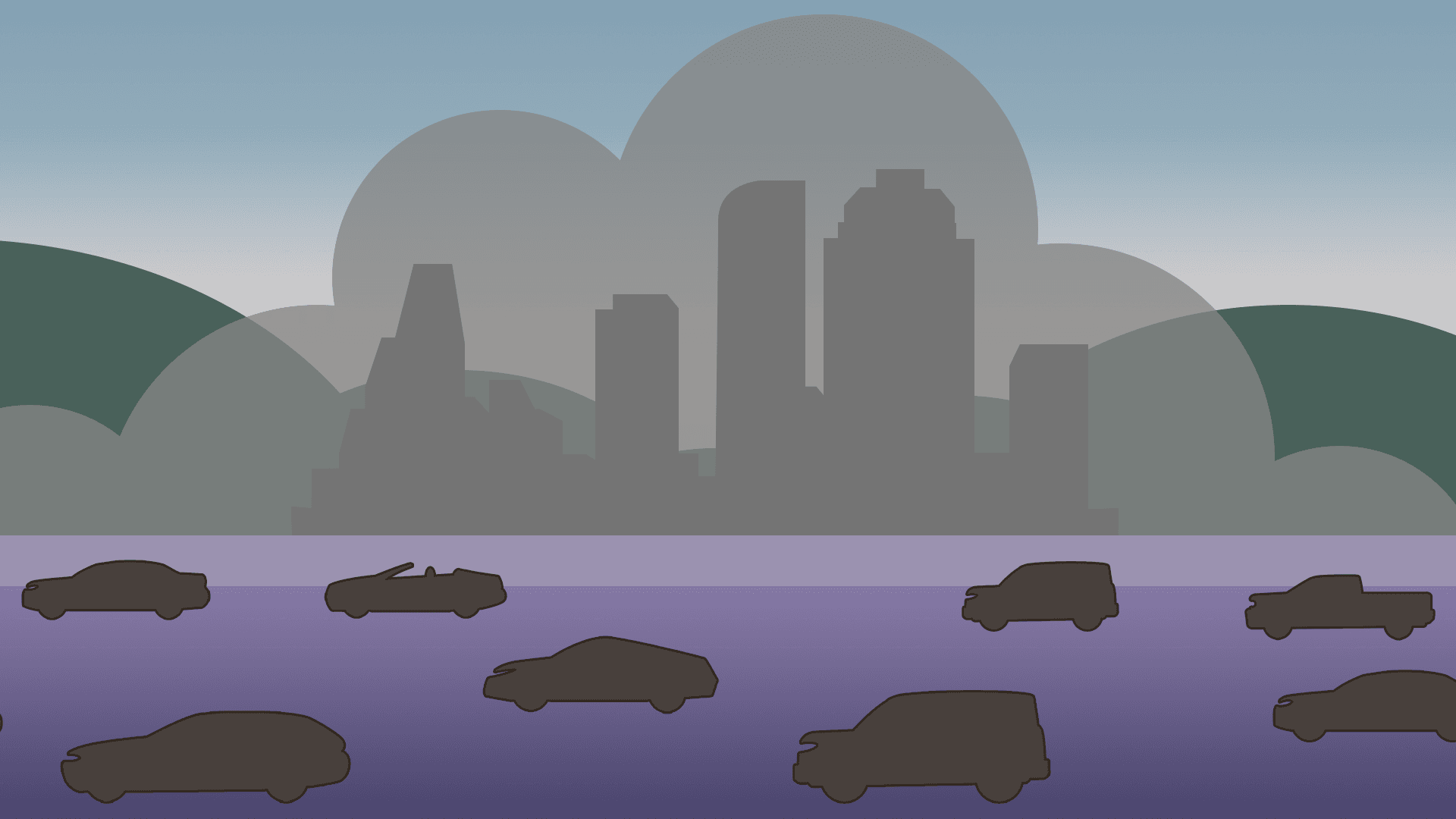




These storyboards demonstrate one of three vignettes; this one illustrates the 'consumerism' point. Although the smog in the background was flagged as perceived negative imagery, this one went largely unchanged from concept to final deliverable.
While the team and I built out design assets from the script, my ever-reliable story artist had already begun drafting storyboards.
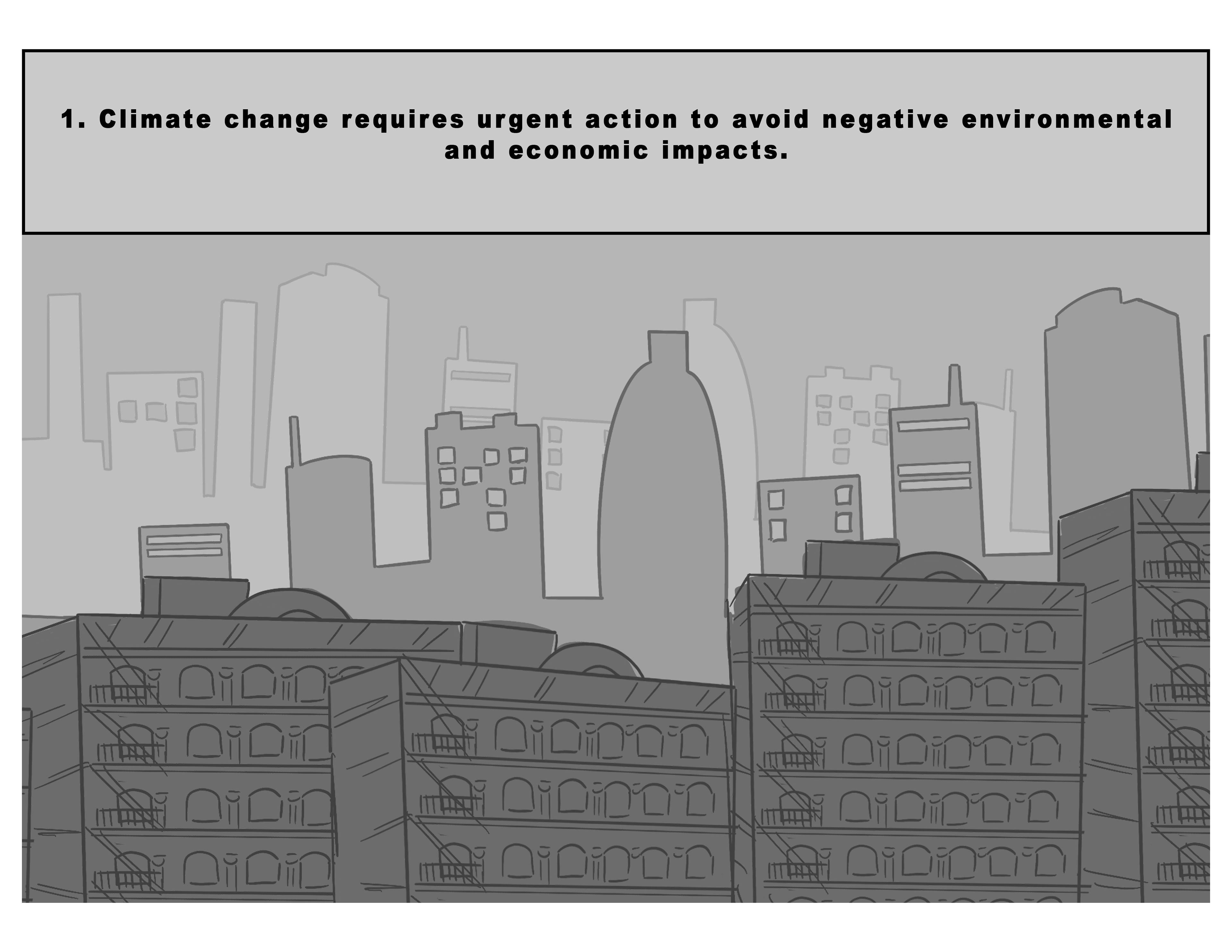













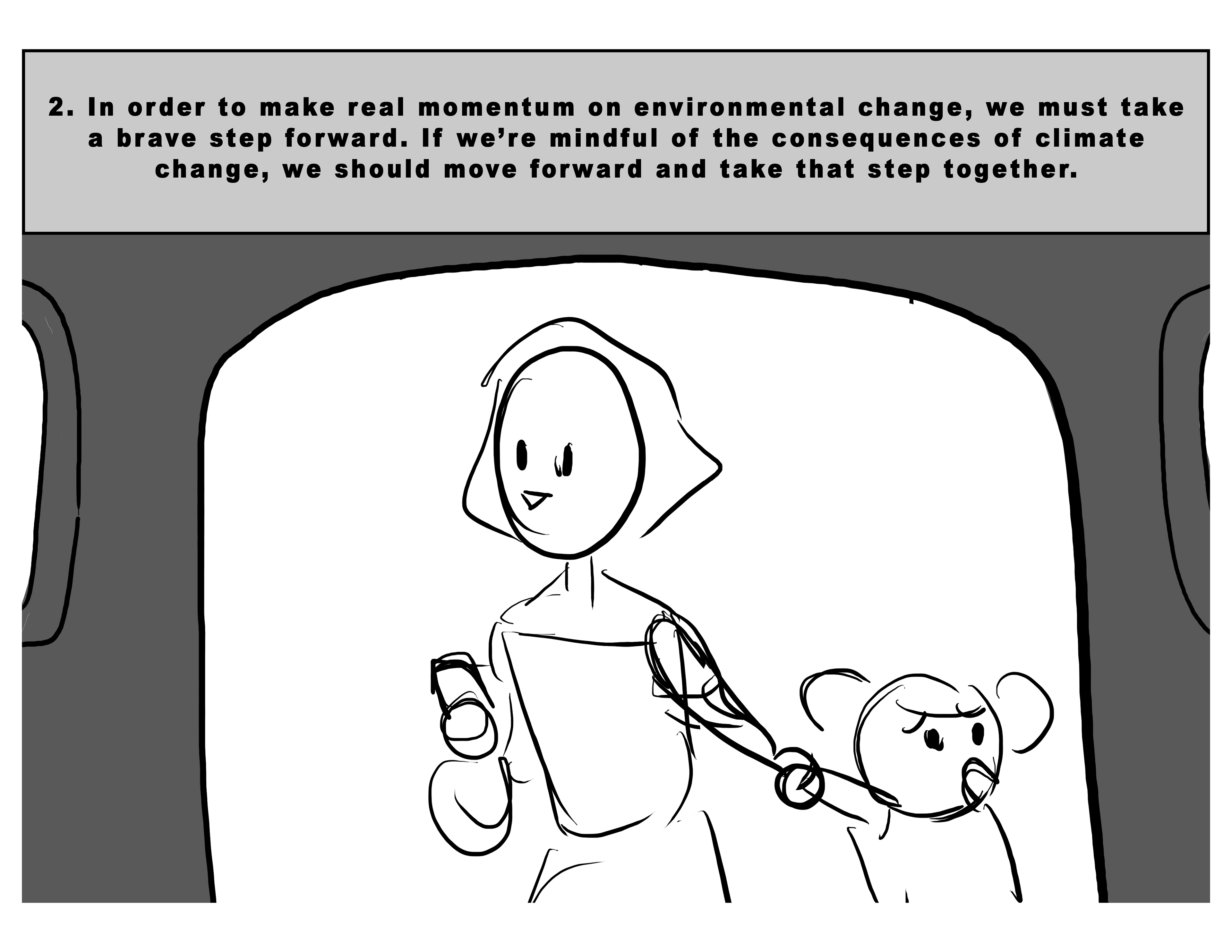
















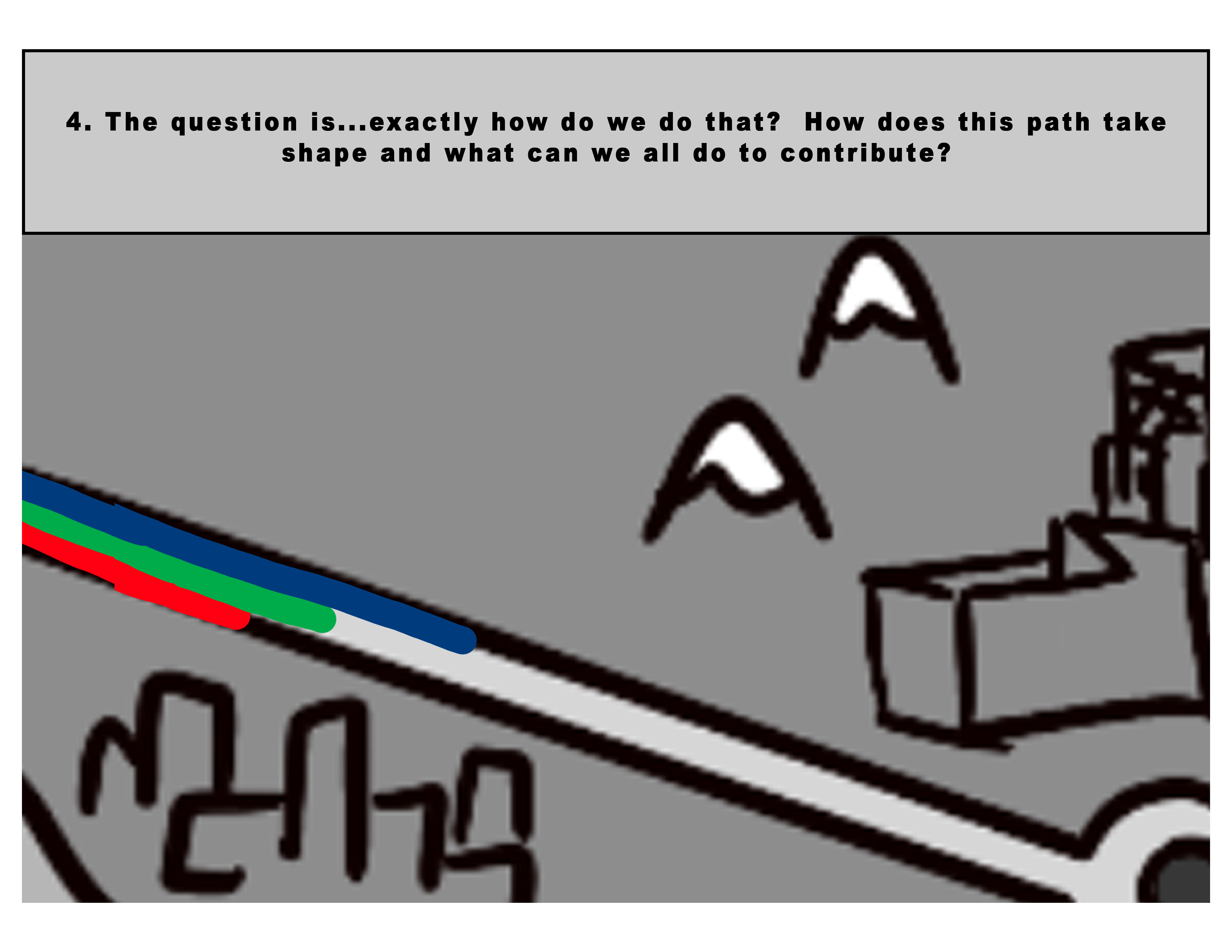


This except from an early draft details an opening sequence.
Here we see one of our trains being boarded, already full of passengers preoccupied by their mobile devices, which would serve as a transition to a carbon emissions graph. We had the idea of dovetailing from this line graph to a transit map and into a title card, with our speeding trains as a backdrop.
Here we see one of our trains being boarded, already full of passengers preoccupied by their mobile devices, which would serve as a transition to a carbon emissions graph. We had the idea of dovetailing from this line graph to a transit map and into a title card, with our speeding trains as a backdrop.
The animatic stage was the most trying of the project. We ran into the problem of too much visual information to convey inside of a limited run time. Over a number of weekly reviews, the concept evolved further as we corroborated with Neal and the BPC team to reconcile time, information, and visuals.

Earth surrounded by excess carbon

Carbon capture tech reclaims and stores some of this carbon as fuel.

Then sun sets, as night sets in...

The US lit up, by virtue of a new energy grid!

Three train conductors united in the Net Zero goal.

The map concept was inspired by Super Mario World and various board games..
Some ideas were either altered or scrapped early on.
Among these were a demonstration of carbon capture tech, three train conductor characters, and a map schema that would have served as a wraparound macro view of our Net Zero journey.
Among these were a demonstration of carbon capture tech, three train conductor characters, and a map schema that would have served as a wraparound macro view of our Net Zero journey.


Our three trains later morphed into a single train outfitted with three engines, each of which represent the key factors driving us towards Net Zero. The design sports an updated color palette as per the client's direction.



The Mother and Daughter characters were an added element of relatability. Rather than passively observe the train from the outside, these two would take us inside for the journey to Net Zero Station. This concept art is an attempt at an appealing design aesthetic that retains an infographic style, characterized by a clean, minimalistic style.
Later iteration of the animatic, featuring a scratch track that I recorded myself.
Text is also baked in, so... you don't have to listen.
Text is also baked in, so... you don't have to listen.
By the time my voice actor, Joe Gaudet, had recorded the voiceover dialogue, weekly deliverables became a hybrid of storyboards and finished animation using assets that we had built out in the background throughout the review process. This was helpful in allowing BPC to see our progress as well as understand what the finished presentation would look like, which was sometimes difficult to explain when presenting rough storyboards and still artwork alone.
An animatic/animation hybrid, this time with professional VO courtesy of Joe Gaudet.
Throughout this project I did my best to stress clear communication, regular progress reports, and true collaboration.
The result ended up being more than a little different from the initial concept we had in mind, but one that proved to be more effective for it.
I’m proud of what we accomplished here, and grateful for the experience.
I’m proud of what we accomplished here, and grateful for the experience.
The final deliverable for 'The Fast-Track to Net Zero'.

